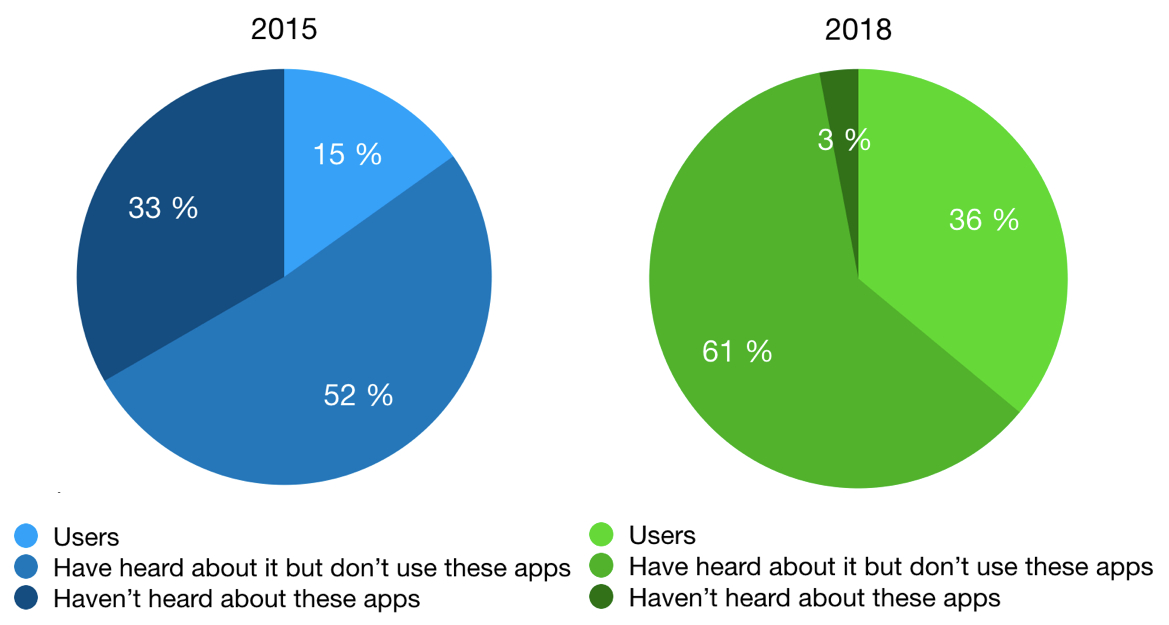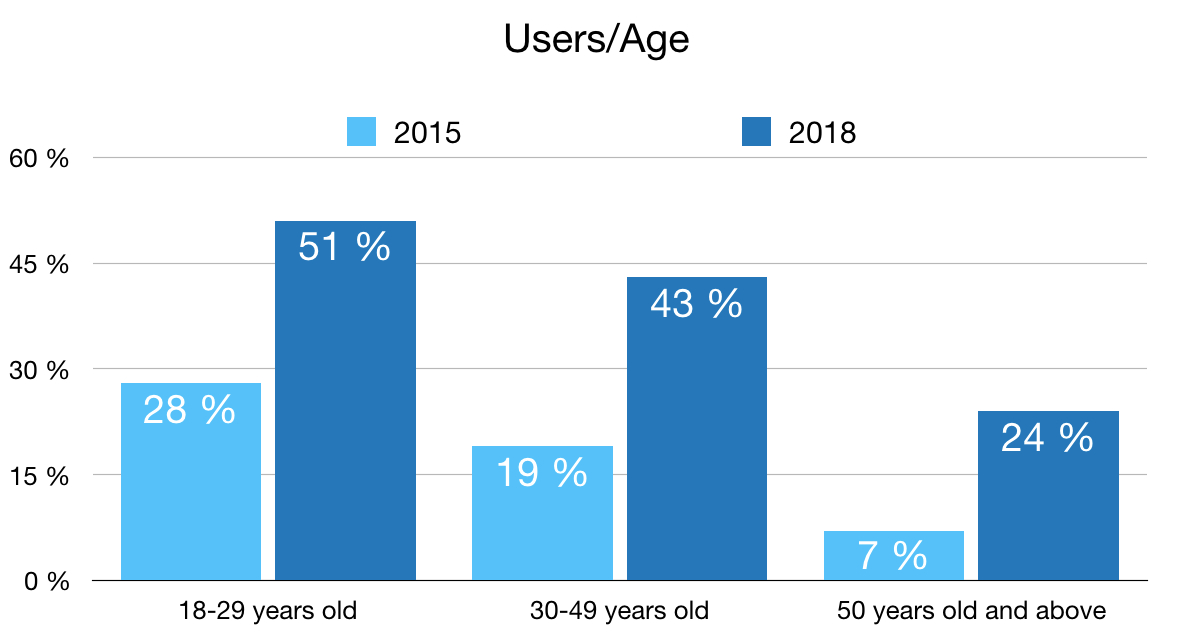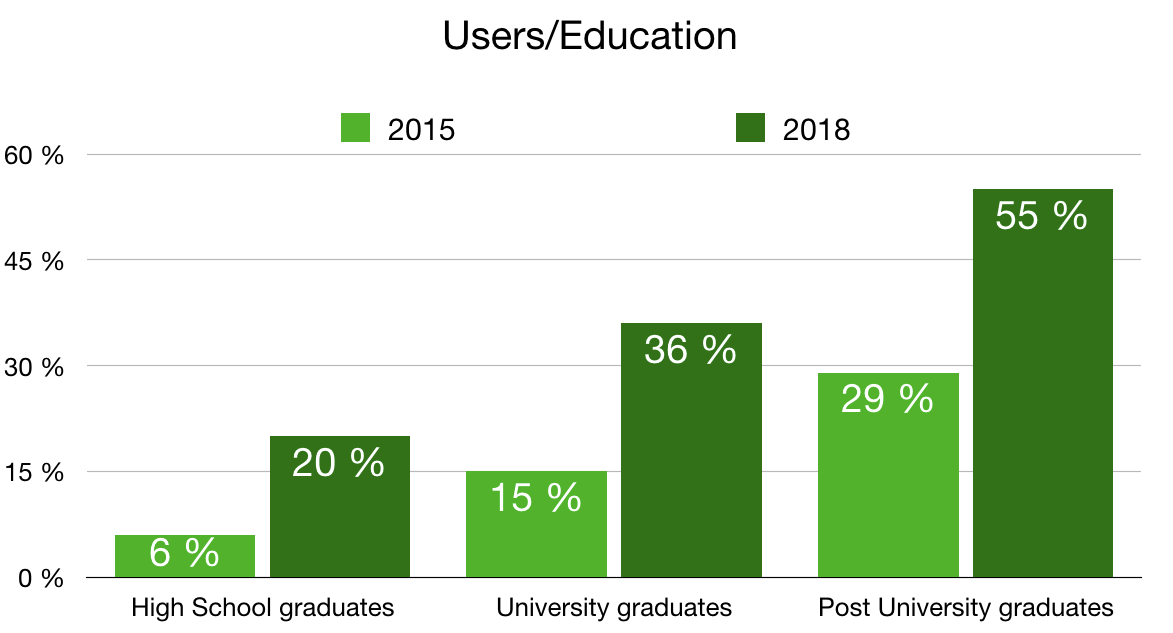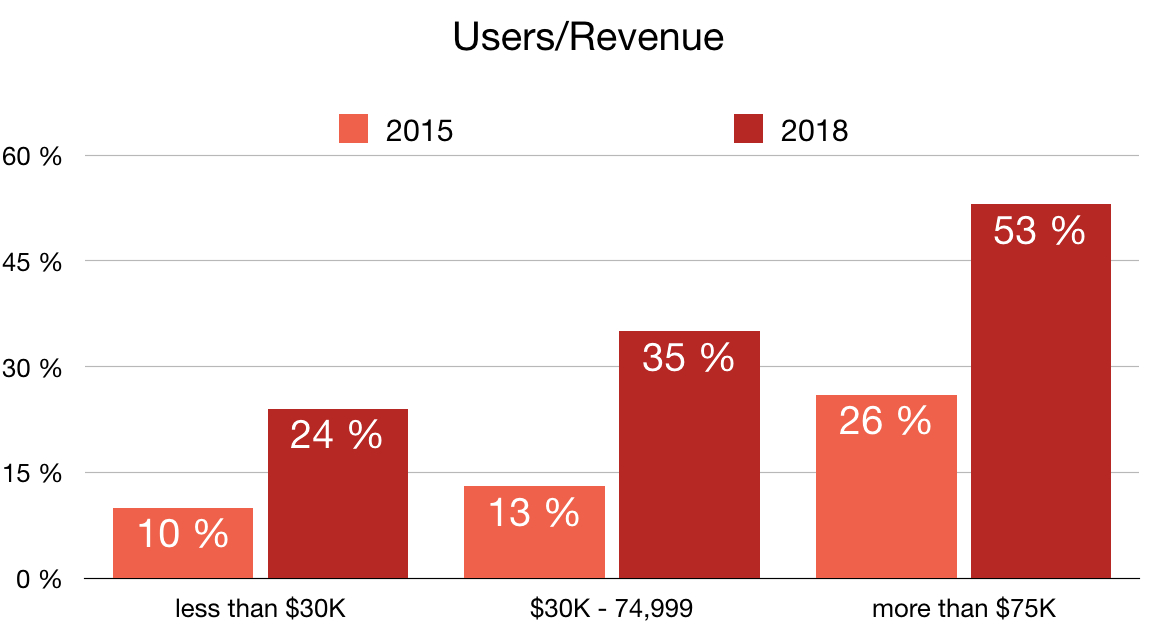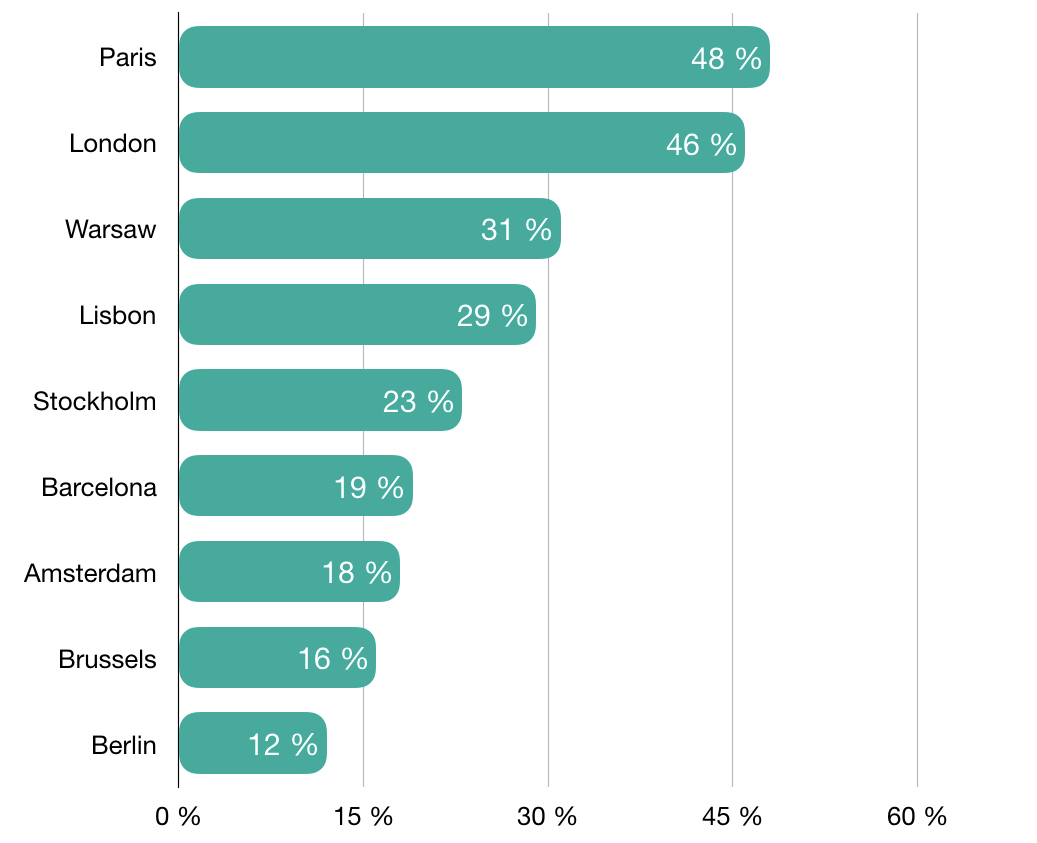Travel options are changing, and many American consumers’ habits are also changing. 10 years after the creation of Uber, what is the status of private transport and ride-hailing applications? Who uses this type of application, how and why?
In this article, we propose to analyse the evolution of transport applications for private individuals according to their consumers. As most of these applications originate from the United States, the data developed and examined in this article will be concentrated in this region of the world, although such applications exist on all continents. Also, the evolution and expansion of these services since 2015 will be compared, in particular, thanks to the study conducted by the Pew Research Center over the past few years.
Summary
- The context of the Uberisation
- Who are the Americans that use ride-hailing applications?
- Frequent situations of Uber and Lyft use
- What is the situation in Europe?
The context of the Uberisation
The creation and evolution of Uber in March 2009 in San Francisco, USA – a company offering private passenger transport services by private car with driver – has made significant waves in the American and global economy. A few years later, the term “Uberisation” is increasingly used in economic language. This term includes the notion of innovation and disruption in the traditional economic order, including through the use of technological tools such as mobile applications. Overall, this term can be considered part of the collaborative economy – or sharing economy – since it also implies that professionals providing services and those requesting them are in direct contact with each other.
We are considering here mobile applications allowing individuals to request a transport service from point A to point B in a private car – in ride-hailing -, using their smartphone and this by contacting the driver directly. This is the concept developed and marketed by Uber, Lyft, Gett, and many others.
The Users
Source: Pew Research Center, survey conducted between 24 September and 7 October 2018.
Key figures
In 2015, only 15% of Americans said that they used applications such as those provided by Uber or Lyft to commute, compared to 36% in 2018.
The percentage of users has more than doubled in four years, and only 3% are unaware of the existence of these applications in 2018.
Who are the Americans that use ride-hailing applications?
The people using, or not using, ride-hailing applications, private vehicle transport with a driver, have been classified according to different criteria, such as their age, their level of education, their annual income and their location, i.e. whether their place of residence is in an urban or rural area. These different poles make it possible to categorise and classify users and to see the evolution that has taken place over the last four years.
Caption: This first graph summarises the rate of ride-hailing applications used in the United States according to predefined age groups and, compares 2015 with 2018.
The figures have changed significantly, and the user rate has doubled for almost all the categories mentioned above. The 18-29-year-olds, cradled in technology and smartphones all their lives, represent, not surprisingly, the highest percentage of users of applications such as Uber and Lyft. However, other age groups are not left out. Americans over 50 are also taking the plunge, with 24% of them using Uber or Lyft in 2018 compared to 7% in 2015. Even considering that some were still in the 30-49 age group in 2015, this still represents a significant increase. The same phenomenon is visible in the middle age group, which has seen a 24% increase in users between 2015 and 2018. All age groups are affected by this need to travel, and these applications seem to satisfy all generations as they are all becoming more and more popular, whether for business or personal travel.
In 2018, less than a quarter of American high school graduates use Uber or Lyft while more than a third of university graduates and more than half of post-graduates are using these applications. The more educated people tend to use these applications more often. This is also because many of them live in urban areas where access to this type of service is straightforward and fast, unlike in rural areas where there are very few Uber or Lyft drivers.
The same is true when we look at the percentage of users concerning their annual income. More than 70% of people with a yearly salary of $75,000 or more live in cities. Plus, they are also the most likely to choose to use this mode of transport rather than other potentially slower or more congested modes such as public transport or cycling, for example.
Overall, very few people use these applications daily. The majority of users of apps such as Uber or Lyft report using them once a month or less and are mainly urban dwellers who can receive this service in their area more efficiently and more quickly than those who are living in rural areas.
Introduction of the company on the stock market
On the strength of their success, the two main players in the American ride-hailing market, Uber and Lyft, said they had begun the process of going public. Currently valued at $15 billion, the Lyft company is expected to go public on Nasdaq by the end of March 2019.
Frequent situations of Uber and Lyft use
After analysing the Americans who use this type of application the most because of their age bracket, their level of education, their annual income and their geographical location, it is interesting to see in which context and for what purpose they use Uber or Lyft for example.
A study carried out by Morning Consult between 27 and 29 September 2018 using a panel of 290 Americans shows that they prefer to use Uber or Lyft rather than traditional taxi services – except when prices increase drastically on applications.
In a relatively straightforward way, Americans use Uber or Lyft, whether for business or personal travel. Rather than ordering a taxi, they use these applications mainly during their holidays, late at night, for journeys of less than 30 minutes and especially for trips between the city and the airport. Many people are not willing to take the time to look for their way and use public transport when they find themselves in a big city, in a hurry or on a business trip. They use Uber or Lyft to simplify their task when travelling or if they are likely to do so during stormy weather.
These analyses confirm the decline in the popularity of traditional taxi companies and the desire of people who are seeking services to have direct and privileged contact with the professional.
What is the situation in Europe?
According to a study by another market research institute, Parisians are the first users of ride-hailing applications in Europe. As a result, more and more city dwellers prefer to use these types of applications occasionally rather than buying a car and having to manage the associated repair, insurance and parking costs.
Ride-hailing applications would, therefore, be an alternative for Europeans not only to traditional taxi companies but also to the acquisition of a car.
European users
Source: ORB Institute, study carried out in August 2017 with 10,000 people living in the above cities)
This graph shows the rates of ride-hailing application users in major European capitals. In the lead, nearly 50% of Parisians use this type of application followed by Londoners and far ahead of Brussels residents who are only 16% to claim to use these applications.
The Europeans’ use of VTC applications is similar to that of the Americans. It is an excellent complement to public transport, convenient at night and especially for people living in large cities, whether for business or personal travel.
Posted in Misc..
